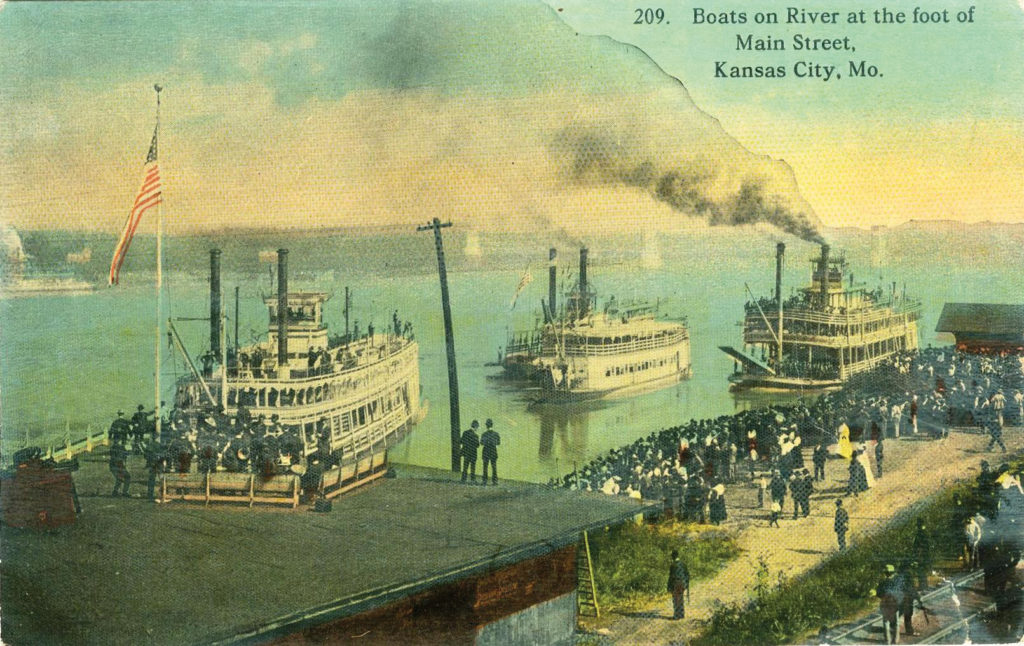
Michael Bushnell
Contributing Historian
“Boats on the river at the foot of Main Street, Kansas City, Mo,” which is the title of this photographic postcard published in 1908 by the Elite Postcard Company of Kansas City, Mo. In the background of this card, the newly constructed bridge piers for the Armour-Swift and Burlington Bridge (ASB).
These piers were completed in 1890, but work on the bridge was stymied by a lack of funds, so the piers stood as stark monoliths in the riverbed for more than 11 years. Then, in 1903, Armour, Swift and Burlington interests acquired this project. However, construction languished for six years before restarting in 1909 and ultimately completed in December 1911.
By the time this postcard was published, river trade on the Missouri was dwindling due to the advent of the railroads. An 1857 Wharf-Master’s report showed that more than 700 boats docked at the Port of Kansas City over the course of a single year. River traffic, however, was adversely affected by the burgeoning railroads and its efficiency in the transportation of both goods and freight over long distances.
On April 29, 1907 — under the banner of the Kansas City Transportation and Steamship Company — $200,000 in capital was granted to revitalize and boost river traffic. The company’s board of directors consisted of: Lawrence M. Jones, president: William Volker, treasurer: J.C. Lester, secretary: O.V. Dodge: A.G. Ellet: C.E. Faeth; A.H. Munger: J.F. Richards: Leon Smith: J.J. Swofford: J.P. Townley: J.H. Wiles and Jerome Twichell. Between 1887 and 1907, the shipped tonnage on the Missouri River decreased drastically from more than 637,000 tons to a mere 89,000 tons. Barge count for the same period dropped from more than 1,200 in 1887 to only 417 in 1907.
According to figures offered by the Kansas City Merchants Exchange, river traffic was off an additional 30 percent between 1872 to 1887. Shippers often shrewdly rate-shopped both the railroads and the barge outfits — playing one rate against the other. Railroads would offer preferred rates to river towns and barge companies would be compelled to meet them or lose their business. Railroads often won the day in the rate war — leaving the barge companies high and dry.
Given the throng of people on-hand, as well as the brass band assembled atop the Wharf-Master’s building to greet the four boats shown on this postcard, it very well could be the launch ceremony for said revitalization efforts!
















